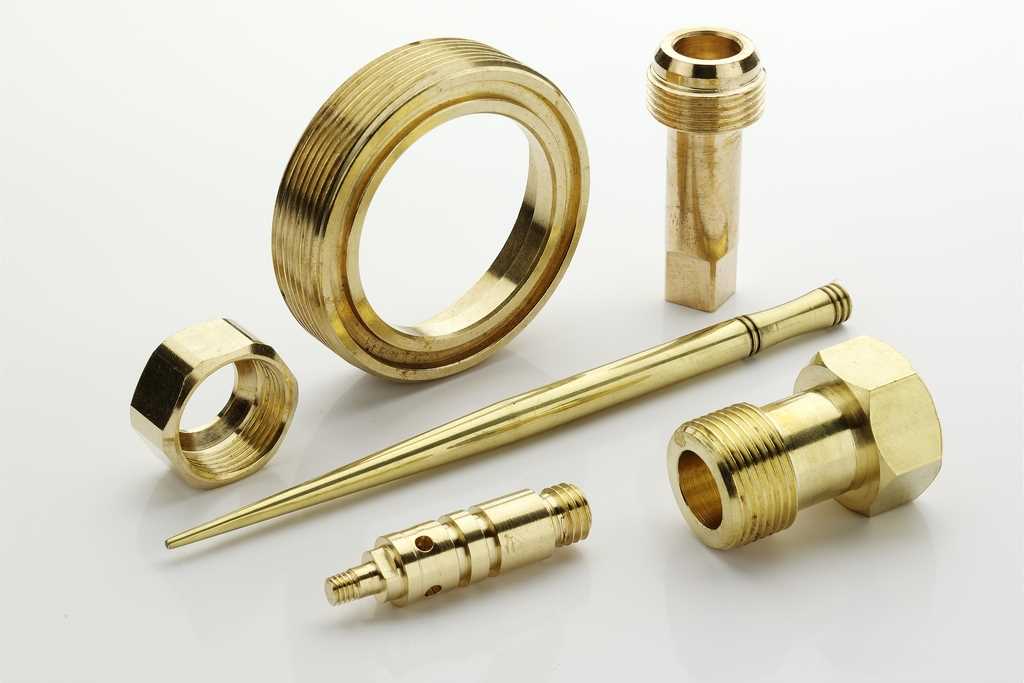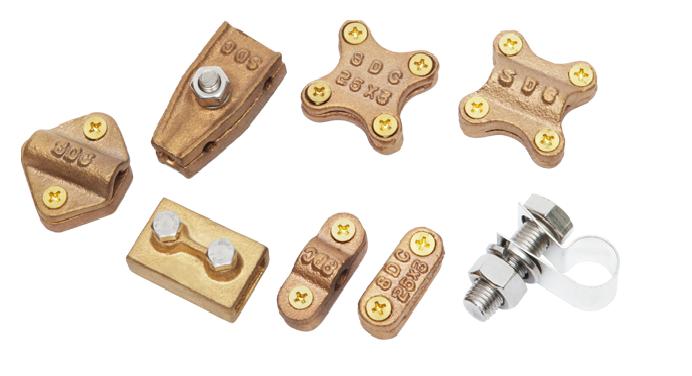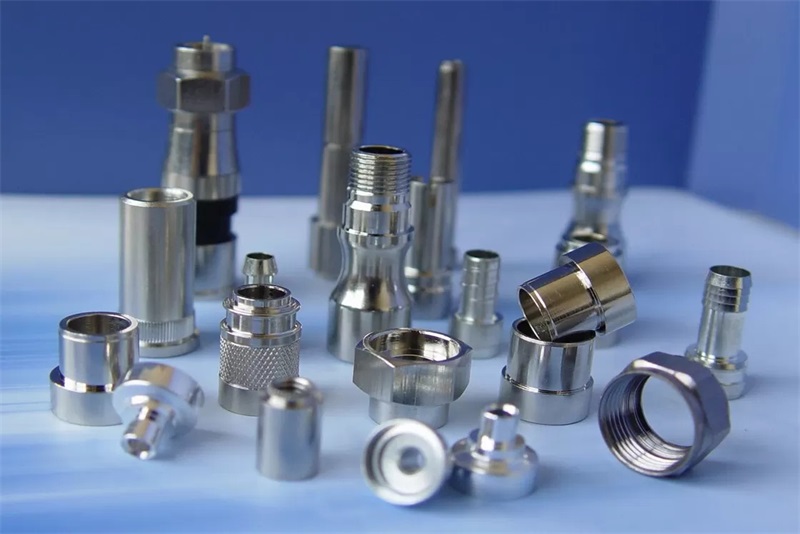Brass, an alloy composed of copper and zinc, holds an esteemed position in the world of manufacturing and engineering due to its remarkable properties. Known for its durability, malleability, and excellent electrical conductivity, brass has become a staple in various industries. Among its many applications, Brass Turned Parts and brass electrical parts stand out for their essential roles in creating high-quality, reliable products. This article delves deep into the world of Brass Turned Parts, exploring their significance, manufacturing processes, applications, and advantages.
Understanding Brass Turned Parts
Brass Turned Parts refer to components crafted through a machining process known as turning. This process involves rotating a brass workpiece while a cutting tool removes material to achieve the desired shape and size. These parts are integral to many industries, including automotive, electronics, plumbing, and aerospace, due to their precision, strength, and corrosion resistance.
The Manufacturing Process
The creation of Brass Turned Parts is a meticulous process that demands high precision and expertise. It begins with selecting the appropriate brass alloy, tailored to the specific requirements of the part. Common alloys include C36000 (free machining brass) and C38500 (architectural brass), chosen for their machinability and mechanical properties.
Material Preparation: The brass rods or bars are cut to the required length, ensuring minimal wastage and optimal use of material.
Turning: The prepared brass pieces are mounted on a lathe machine. As the workpiece rotates, a single-point cutting tool moves parallel to the axis of rotation, shaving off material to create the precise dimensions of the part. This step may involve various techniques, such as facing, tapering, threading, and grooving, depending on the complexity of the part.
Secondary Operations: Post-turning, additional processes like drilling, milling, and tapping might be employed to add intricate details or features. Surface treatments such as polishing, plating, or coating are also applied to enhance the appearance and performance of the parts.
Quality Control: Each Brass Turned Part undergoes stringent quality checks to ensure it meets the required specifications and tolerances. This includes dimensional inspection, surface finish evaluation, and mechanical testing.
Applications of Brass Turned Parts
The versatility of Brass Turned Parts makes them indispensable in numerous sectors. Here are some key applications:
Automotive Industry: Used in components like fuel injectors, brake systems, and transmission parts due to their robustness and resistance to wear and tear.
Electronics: Essential in connectors, terminals, and pins, where reliable electrical conductivity is crucial.
Plumbing: Common in fittings, valves, and couplings, offering durability and resistance to corrosion.
Aerospace: Utilized in various avionics and structural components, providing strength without adding significant weight.
Medical Equipment: Found in precision instruments and devices, where accuracy and reliability are paramount.
Advantages of Brass Turned Parts
The popularity of Brass Turned Parts can be attributed to several advantages they offer:
Durability: Brass exhibits excellent resistance to wear, making these parts long-lasting even in demanding environments.
Corrosion Resistance: The natural corrosion resistance of brass makes it ideal for applications exposed to moisture and various chemicals.
Machinability: Brass is easier to machine compared to other metals, resulting in precise and complex parts with minimal effort.
Aesthetic Appeal: The gold-like appearance of brass lends a premium look to products, making it a preferred choice for decorative and architectural applications.
Recyclability: Brass is highly recyclable, contributing to sustainable manufacturing practices and reducing environmental impact.
Brass Electrical Parts
Brass electrical parts form the backbone of countless electrical systems and devices. Their reliability, combined with brass's inherent properties, ensures optimal performance in critical applications. These parts encompass a wide range of components, including connectors, terminals, switches, and contact pins.
Key Attributes of Brass Electrical Parts
Electrical Conductivity: Brass offers excellent conductivity, ensuring efficient current flow and minimal energy loss.
Thermal Conductivity: The ability to dissipate heat effectively makes brass electrical parts suitable for high-temperature applications.
Mechanical Strength: Brass provides the necessary strength to withstand mechanical stresses and maintain structural integrity.
Corrosion Resistance: Resistance to oxidation and corrosion ensures longevity and reliability in various environments.
Workability: The malleability and ductility of brass allow for the creation of intricate designs and precise components.
Manufacturing Brass Electrical Parts
The production of brass electrical parts involves several steps, each critical to achieving high-quality, reliable components.
Material Selection: Choosing the right brass alloy based on the specific application requirements, such as conductivity and strength.
Precision Machining: Techniques like turning, milling, and stamping are employed to shape the brass into the desired forms. High precision is essential to ensure proper fit and function.
Surface Treatment: Coatings such as tin, nickel, or silver are often applied to improve conductivity, prevent corrosion, and enhance solderability.
Assembly: In some cases, multiple brass components are assembled to create complex electrical parts, requiring precise alignment and secure connections.
Quality Assurance: Rigorous testing, including electrical, mechanical, and environmental assessments, is conducted to guarantee performance and reliability.
Applications of Brass Electrical Parts
Brass electrical parts are ubiquitous in modern technology, finding applications in:
Consumer Electronics: Connectors, terminals, and switches in devices like smartphones, computers, and home appliances.
Automotive: Electrical systems in vehicles, including battery terminals, connectors, and sensors.
Telecommunications: Components in communication devices and infrastructure, ensuring reliable signal transmission.
Industrial Equipment: Electrical connectors and terminals in machinery and control systems, ensuring robust performance in harsh environments.
Renewable Energy: Parts in solar panels, wind turbines, and other renewable energy systems, where durability and conductivity are essential.
Conclusion
The significance of Brass Turned Parts and brass electrical parts in modern engineering and manufacturing cannot be overstated. Their exceptional properties, including durability, corrosion resistance, and machinability, make them indispensable across various industries. From automotive to electronics, plumbing to aerospace, and beyond, these components play a crucial role in ensuring the reliability and performance of countless products and systems.
The meticulous manufacturing processes, stringent quality controls, and diverse applications underscore the versatility and importance of Brass Turned Parts and brass electrical parts. As technology continues to evolve, the demand for these high-quality components is expected to grow, further cementing their place as vital elements in the world of engineering and manufacturing.



















